Related Research Articles

Clairvoyance is the claimed psychic ability to gain information about an object, person, location, or physical event through extrasensory perception. Any person who is claimed to have such ability is said to be a clairvoyant.

James Randi was a Canadian-American stage magician, author and scientific skeptic who extensively challenged paranormal and pseudoscientific claims. He was the co-founder of the Committee for Skeptical Inquiry (CSI), and founder of the James Randi Educational Foundation (JREF). Randi began his career as a magician under the stage name The Amazing Randi and later chose to devote most of his time to investigating paranormal, occult, and supernatural claims, which he collectively called "woo-woo". Randi retired from practicing magic at age 60, and from his foundation at 87.

Parapsychology is the study of alleged psychic phenomena and other paranormal claims, for example, those related to near-death experiences, synchronicity, apparitional experiences, etc. Criticized as being a pseudoscience, the majority of mainstream scientists reject it. Parapsychology has also been criticised by mainstream critics for claims by many of its practitioners that their studies are plausible despite a lack of convincing evidence after more than a century of research for the existence of any psychic phenomena.
Remote viewing (RV) is the practice of seeking impressions about a distant or unseen subject, purportedly sensing with the mind. Typically a remote viewer is expected to give information about an object, event, person or location that is hidden from physical view and separated at some distance. Physicists Russell Targ and Harold Puthoff, parapsychology researchers at Stanford Research Institute (SRI), are generally credited with coining the term "remote viewing" to distinguish it from the closely related concept of clairvoyance. According to Targ, the term was first suggested by Ingo Swann in December 1971 during an experiment at the American Society for Psychical Research in New York City.
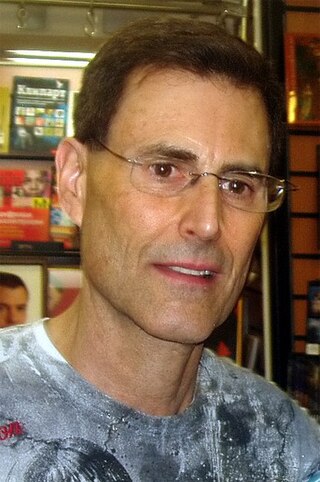
Uri Geller is an Israeli-British illusionist, magician, television personality, and self-proclaimed psychic. He is known for his trademark television performances of spoon bending and other illusions. Geller uses conjuring tricks to simulate the effects of psychokinesis and telepathy. Geller's career as an entertainer has spanned more than four decades, with television shows and appearances in many countries. Magicians have called Geller a fraud due to his claims of possessing psychic powers.
The Stargate Project was a secret U.S. Army unit established in 1978 at Fort Meade, Maryland, by the Defense Intelligence Agency (DIA) and SRI International to investigate the potential for psychic phenomena in military and domestic intelligence applications. The Project, and its precursors and sister projects, originally went by various code names – 'Gondola Wish', 'Stargate', 'Grill Flame', 'Center Lane', 'Project CF', 'Sun Streak', 'Scanate' – until 1991 when they were consolidated and rechristened as the "Stargate Project".
James Alan Hydrick is an American former stage performer and self-described psychic.
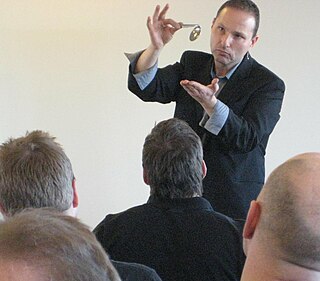
Spoon bending is the deformation of objects, especially metal cutlery, purportedly by paranormal means. It is a common theme for magic tricks, which use a variety of methods to produce the effect. Performers commonly use misdirection to draw their audience's attention away while the spoon is manually bent. Another method uses a metal spoon that has been prepared by repeatedly bending the spoon back and forth, weakening the material. Applying light pressure will then cause it to bend or break.
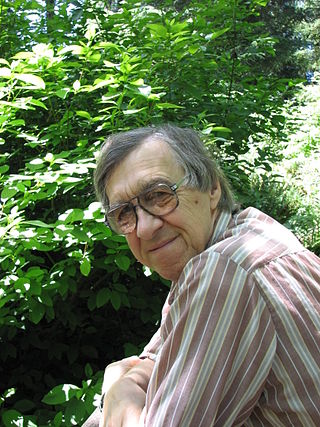
Charles T. Tart is an American psychologist and parapsychologist known for his psychological work on the nature of consciousness, as one of the founders of the field of transpersonal psychology, and for his research in parapsychology.

The Pigasus Award is the name of an annual tongue-in-cheek award that was presented by noted skeptic James Randi. The award seeks to expose parapsychological, paranormal or psychic frauds that Randi had noted over the previous year. Randi usually made his announcements of the awards from the previous year on April 1.
Ingo Douglas Swann was an American psychic, artist, and writer known for being the co-creator, along with Russell Targ and Harold E. Puthoff, of remote viewing, and specifically the Stargate Project.
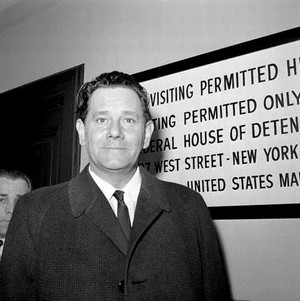
Pieter van der Hurk known as Peter Hurkos, was a Dutchman who allegedly manifested extrasensory perception (ESP) after recovering from a head injury and coma caused by a fall from a ladder when aged 30. He came to the United States in 1956 for psychic experiments, later becoming a professional psychic who sought clues in the Manson Family murders and the Boston Strangler case. With the help of businessman Henry Belk and parapsychologist Andrija Puharich, Hurkos became a popular entertainer known for performing psychic feats before live and television audiences.
Harold E. Puthoff is an American parapsychologist and electrical engineer. In the 2010s, he co-founded the company To the Stars with Tom DeLonge.

Andrija Puharich — born Henry Karel Puharić — was a medical and parapsychological researcher, medical inventor, physician and author, known as the person who brought Israeli Uri Geller and Dutch-born Peter Hurkos (1911–1988) to the United States for scientific investigation.

Russell Targ is an American physicist, parapsychologist, and author who is best known for his work on remote viewing.
Robert George Jahn was an American plasma physicist, Professor of Aerospace Science, and Dean of Engineering at Princeton University. Jahn was also a founder of the Princeton Engineering Anomalies Research Lab (PEAR), a parapsychology research program which ran from 1979 to 2007.
Sensory leakage is a term used to refer to information that transferred to a person by conventional means during an experiment into ESP.

Flim-Flam! Psychics, ESP, Unicorns, and Other Delusions is a 1980 book by magician and skeptic James Randi about paranormal, occult, and pseudoscience claims. The foreword is by science fiction author Isaac Asimov. Randi explores topics which he says that scientists and the media are too willing to promote without skepticism and proper expertise.
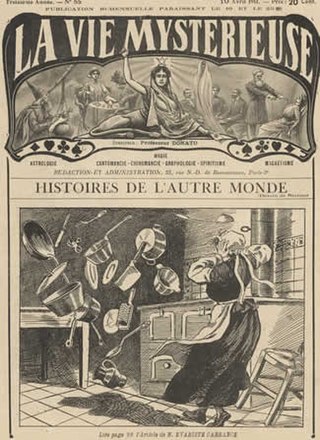
Telekinesis is a hypothetical psychic ability allowing a person to influence a physical system without physical interaction. Experiments to prove the existence of telekinesis have historically been criticized for lack of proper controls and repeatability. There is no reliable evidence that telekinesis is a real phenomenon, and the topic is generally regarded as pseudoscience.
Olof Jonsson (1918-1998) was a Swedish-American engineer and psychic.
References
- ↑ Mumford M.; Rose A. & Goslin D. (1995). An Evaluation of Remote Viewing: Research and Applications. American Institutes for Research. "Archived copy" (PDF). Archived from the original (PDF) on 2017-01-13. Retrieved 2017-01-13.
{{cite web}}: CS1 maint: archived copy as title (link) - ↑ Puthoff, H. E. "CIA-Initiated Remote Viewing At Stanford Research Institute". Archived from the original on August 11, 2015. Retrieved 6 September 2015.
- ↑ Randi, James (1982). The Truth About Uri Geller. Buffalo, NY: Prometheus Books. p. 30. ISBN 978-0-87975-199-9.
- ↑ Kogan I (March 1968). "Information theory analysis of telepathic communication experiments". Radio Engineering. 23: 122.
- ↑ "STAR GATE [Controlled Remote Viewing]". Federation of American Scientists. 2005-12-29. Archived from the original on July 7, 2015.
- ↑ Randi, James (1982). Flim Flam!. Buffalo, NY: Prometheus Books. pp. 132–133. ISBN 978-0-87975-198-2.
- ↑ Targ R, Cole P, & Puthoff H, "Development of Techniques to Enhance Man/Machine Communication", NASA-CR-157886 Final Report, August 1974.
- ↑ Gardner, Martin (1985). Kurtz, Paul (ed.). A Skeptic's Handbook of Parapsychology. Buffalo, NY: Prometheus Books. p. 595. ISBN 978-0-87975-302-3.
- ↑ "The Research Work of Ingo Swann A 32-Year Overview". RVIS, Inc. Archived from the original on 25 October 2005. Retrieved 7 September 2015.
- ↑ Schnabel, Jim (1997). Remote Viewers: The Secret History of America's Psychic Spies. Dell. pp. 88–89.
- ↑ Randi, James (1982). Flim Flam!. Buffalo, NY: Prometheus Books. p. 132. ISBN 978-0-87975-198-2.
- 1 2 Randi, James (1982). Flim Flam!. Buffalo, NY: Prometheus Books. p. 131. ISBN 978-0-87975-198-2.
- ↑ Randi, James (1982). Flim Flam!. Buffalo, NY: Prometheus Books. pp. 132–133. ISBN 978-0-87975-198-2.
- ↑ Randi, James (1982). The Truth Abou Uri Geller. Buffalo, NY: Prometheus Books. p. 30. ISBN 978-0-87975-199-9.
- 1 2 Puthoff, Harold E.; Targ, Russell (1974). "Information transmission under conditions of sensory shielding". Nature. 251 (5476): 602–607. Bibcode:1974Natur.251..602T. doi:10.1038/251602a0. PMID 4423858. S2CID 4152651 . Retrieved 8 September 2015.
- ↑ Hyman, Ray. "2007: Ray Hyman". YouTube. Simon Fraser University. Retrieved 9 September 2015.
- ↑ Randi, James (1982). Flim Flam!. Buffalo, NY: Prometheus Books. p. 137. ISBN 978-0-87975-198-2.
- 1 2 Randi, James (1982). The Truth About Uri Geller. Buffalo, NY: Prometheus Books. ISBN 978-0-87975-199-9.
- ↑ "IMDB for Geller, Uri". IMDB. Archived from the original on September 11, 2015. Retrieved 8 September 2015.
- ↑ Geller, Uri. "Quotes from Scientists". UriGeller.com. Archived from the original on September 11, 2015. Retrieved 7 September 2015.
- ↑ Randi, James (1982). Flim Flam!. Buffalo, NY: Prometheus Books. p. 131. ISBN 978-0-87975-198-2.
- 1 2 "Investigating the paranormal". urigeller.com. Archived from the original on January 7, 2012.
- 1 2 3 "Investigating the paranormal". Nature. 251 (5476): 559–560. 1974. Bibcode:1974Natur.251..559.. doi:10.1038/251559a0. S2CID 4208164 . Retrieved 8 September 2015.
- ↑ Randi, James (1982). Flim Flam!. Buffalo, NY: Prometheus Books. p. 142. ISBN 978-0-87975-198-2.
- ↑ Rebert C, Turner A (1975). "EEG spectrum analysis techniques applied to the problem of psi phenomena". Behavioral Neuropsychiatry. 6 (1–12): 18–24. PMID 4468758.
- ↑ "Quotes from Scientists Archive". UriGeller.com. Archived from the original on September 11, 2015. Retrieved 8 September 2015.
- ↑ Hastings A, Hurt D (October 1976). "A Confirmatory Remote Viewing in a Group Setting". Proceedings of the IEEE. 64 (10): 1544–5. doi:10.1109/PROC.1976.10369. S2CID 36582119.
- ↑ Whitson T, Bogart D, Palmer J, Tart C (October 1976). "Preliminary Experiments in Remote Viewing". Proceedings of the IEEE. 64 (10): 1550–1. doi:10.1109/PROC.1976.10371. S2CID 27302086.
- ↑ Vallee J, Hastings A, Askevold G (October 1976). "Remote Viewing Experiments Through Computer Conferencing". Proceedings of the IEEE. 64 (10): 1551–2. doi:10.1109/PROC.1976.10372. S2CID 24096224.
- ↑ Hyman, Ray (1989). The Elusive Quarry: A Scientific Appraisal of Psychical Research. Buffalo, NY: Prometheus Books. pp. 348–359. ISBN 978-0-87975-504-1.
- ↑ Jahn R (February 1982). "The Persistent Paradox of Psychic Phenomena: An Engineering Perspective". Proceedings of the IEEE. 70 (2): 136–170. CiteSeerX 10.1.1.15.8760 . doi:10.1109/proc.1982.12260. S2CID 31434794.
- ↑ Hyman R., "Parapsychological Research: A Tutorial Review and Critical Appraisal", Proceedings of the IEEE, Vol 74 No 6, pp. 823–849, June 1986.
- ↑ Puthoff H, Targ R (March 1976). "A perceptual channel for information transfer over kilometer distances: Historical perspective and recent research". Proceedings of the IEEE. 64 (3): 329–354. doi:10.1109/PROC.1976.10113. S2CID 12688261.
- ↑ Calkins J (October 1976). "Comments on 'A perceptual channel for information transfer over kilometer distances: Historical perspective and recent research'". Proceedings of the IEEE. 64 (10): 1547–8. doi:10.1109/PROC.1976.10370.
- ↑ Marks D, Kammann R (August 17, 1978). "Information transmission in remote viewing experiments". Nature. 274 (5672): 680–1. Bibcode:1978Natur.274..680M. doi:10.1038/274680a0. S2CID 4249968.
- ↑ Scott C (July 29, 1982). "No "remote viewing"". Nature. 298 (5873): 414. Bibcode:1982Natur.298..414S. doi: 10.1038/298414c0 .
- ↑ Marks D, Scott C (February 6, 1986). "Remote viewing exposed". Nature. 319 (6053): 444. Bibcode:1986Natur.319..444M. doi: 10.1038/319444a0 . PMID 3945330.
- ↑ Gardner Martin (October 1975). "Concerning an effort to demonstrate extrasensory perception by machine". Scientific American. 233 (4): 114–8. doi:10.1038/scientificamerican1075-114.
- ↑ Diaconis P (December 1978). "ESP Research, Letters". Science. 202 (4373): 1146. doi:10.1126/science.202.4373.1146. PMID 17735385.
- ↑ Randi, James (1982). Flim Flam!. Buffalo, NY: Prometheus Books. pp. 132–142. ISBN 978-0-87975-198-2.
- ↑ Hyman, Ray (1989). The Elusive Quarry: A Scientific Appraisal of Psychical Research. Buffalo, NY: Prometheus Books. p. 386. ISBN 978-0-87975-504-1.
- ↑ Hyman, Ray (1989). The Elusive Quarry: A Scientific Appraisal of Psychical Research. Buffalo, NY: Prometheus Books. p. 380. ISBN 978-0-87975-504-1.
- ↑ Hyman, Ray (1989). The Elusive Quarry: A Scientific Appraisal of Psychical Research. Buffalo, NY: Prometheus Books. p. 381. ISBN 978-0-87975-504-1.